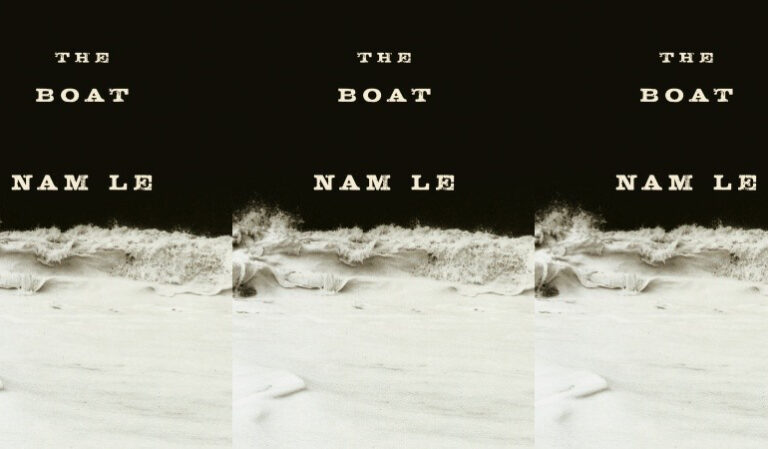Reading The Paper Menagerie

Last summer, the New York Times ran an opinion piece by Elizabeth Méndez Berry and Chi-hui Yang, “The Dominance of the White Male Critic,” on the need for more critics of color to engage with and comment on work created by artists of color. As one author and art critic, Aruna D’Souza, stated in an interview for the piece, “the problem is not that these [white] critics lack some essential connection with the work of artists of color. It’s that many of them simply are not familiar with the intellectual, conceptual and artistic ideas that underlie the work.”
The disconnect between cultural touchstones of white, male critics and artists of color came into sharp relief when reviews for The Farewell and Parasite—films that center elements of Chinese-American and Korean experiences, respectively—were published. While both films were praised for their artistry and nominated for prestigious awards, there seemed to be confusion around each film’s content, and even the most glowing reviews had odd little misunderstandings folded into them. A number of reviews praising The Farewell, for instance, stated that it was an enjoyable movie despite the seemingly unbelievable premise. The film, which follows the story of a family keeping their grandmother’s terminal cancer diagnosis from her, is actually based on an experience that is common in multiple Asian cultures. Far from being an odd or sensational spin on family dynamics, The Farewell brings—finally—a common cultural experience to the screen. These films and their reception thus highlight the importance of producing—and engaging with—art that pulls from outside of Anglo-centric points of reference.
Even before The Farewell and Parasite, Ken Liu’s 2011 collection of short stories, The Paper Menagerie, did the same sort of centering of Asian experience, particularly through the use of elements of Chinese and Japanese history. The collection includes a wide array of stories, ranging in style from speculative to science fiction to magical realism; it’s also a prime example of a work that shifts focus away from genre tropes and allows the reader to see what these stories look like through a different cultural lens.
In “Mono no Aware,” for example, the protagonist is the last Japanese person in the universe, living on a spaceship launched after the cataclysmic destruction of Earth. While much of sci-fi tends toward an erasure of culture in pursuit of a “pan-human” vision of humanity, Liu’s character is still deeply rooted in his cultural identity. He shares what history he remembers with the children on the ship, who have no knowledge of a life on Earth or the different cultures left behind. On one hand, it might seem ludicrous to cling to a culture in the face of planetary destruction, but Liu’s approach highlights how many of us rely on culture, and how tightly we hold on to things that we know are ultimately fleeting, even in the face of an apocalyptic event.
The title of the story itself, 物の哀れ (Mono no aware), refers to an appreciation and awareness of transience or the impermanence of things, tinged with a sense of pathos. The phrase was put into wider circulation through literary criticism around The Tale of Genji written by Edo-period scholar Norinaga Motoori, though the term appears in earlier Heian texts. The phrase is now a well-established part of Japanese culture, carrying with it centuries of meaning and history that rings true even in a futuristic setting. Liu builds off this long history by imagining what our sci-fi worlds would look like if we carried our cultures with us to the stars, rather than imagining a future where all of humanity shares a monoculture.
Though many of the stories in The Paper Menagerie look to the future, there are some that delve into the past through the exploration of alternative histories. In “The Man Who Ended History: A Documentary,” Liu delves into the horrific historical events of Japan’s Manchurian occupation during World War II and the particular cruelties enacted by Unit 731. Using that unique historical backdrop, Liu is able to explore the complex and strained relationship between China and Japan, as well as consider broader questions around how individuals relate to history in the present. While there are a number of alternative histories and stories of speculative fiction based on World War II, there are fewer stories exploring the war as it is understood in Asia—particularly in terms of Japan’s colonization of neighboring Asian countries. As someone who is deeply familiar with this history, it was a new experience for me to see it used as a springboard for speculative fiction. The themes Liu is able to draw out from this point of reference provide the reader with a rich and moving experience.
Alongside the uptick in buzz around media centering various Asian and Asian-American experiences, this question of how that media will be consumed and interpreted remains. For those of us whose experiences are not commonly centered, it is an exhilarating experience. For those outside of these cultural experiences, such media also provides the opportunity for growth. Liu’s strength in many of the stories in The Paper Menagerie is his refusal to over-explain or baby readers who might be unfamiliar with the cultural touchstones in his work. Instead, he provides footnotes for more obscure references and even provides a works cited page at the end of some stories to point readers toward more information if they are interested in the histories he shares. Within the world of the story itself, the fully rendered Asian characters simply live and breathe, representing a wide array of experiences that, most importantly, do not exist to merely serve the plot.
Including a more thorough variety of experiences in media is increasingly necessary in a world that, for centuries, has prioritized a certain type of story. The increased attention given to stories like The Farewell and Parasite and those in The Paper Menagerie thus offer guides for artists who feel a similar pull toward sharing their experiences, even as they fear their stories will be read as too culturally specific or even misunderstood. These works resonate deeply with readers who seek something of themselves, while also enriching the genres they participate in.


